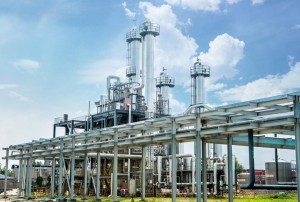Hyaluronic Acid: Exploring the Field of Sustainable Development
Hyaluronic Acid (HA), as a natural molecule, is not only widely used in the fields of beauty and medical treatment, but also in the context of sustainable development, its green preparation, multi-field applications and environmental friendliness have also become Research hotspots. This article will explore the sustainable sources of hyaluronic acid, the greening of its preparation process, its multi-field applications and its potential in the circular economy.
Sources and Sustainability of Hyaluronic Acid
The sustainability of hyaluronic acid is about the choice of its source. Traditionally, hyaluronic acid is mainly extracted from animal tissues. This method is risky, has low extraction rate, and has not been widely used. However, with the popularization of the concept of sustainable development, biosynthesis of hyaluronic acid has become a more promising direction. In recent years, green production methods such as microbial fermentation can reduce dependence on animal resources and promote the sustainable production of hyaluronic acid. This is currently the most widely used production method.
Greening the Preparation Process
The preparation process of hyaluronic acid directly affects its environmental impact. Adopting green preparation processes with low energy consumption and low waste generation helps reduce negative impacts on the environment. The introduction of technologies such as efficient catalysts, renewable energy and waste recycling not only improves production efficiency, but also helps achieve sustainable preparation of hyaluronic acid.
Hyaluronic acid‘s Multi-field Applications
In addition to the medical field, hyaluronic acid is widely used in beauty, food, medicine and other fields. Its unique properties make it an ideal additive and material. Through applications in different fields, hyaluronic acid can provide broader support for sustainable development goals.
Hyaluronic Acid Potential in the Circular Economy
The biodegradability of hyaluronic acid makes it easier to be naturally degraded after use, reducing the burden on the environment. Promoting the circular economic utilization of hyaluronic acid, including the recycling and reuse of discarded products, will help reduce resource waste and achieve sustainable operation of materials in the economic system.
Conclusion
Research on hyaluronic acid should not only focus on the medical field, but also comprehensively consider its sustainable application in various fields. Through the promotion of green preparation, multi-field applications and circular economy, hyaluronic acid is expected to become an important supporter of sustainable development and contribute to sustainable practices in various fields.
Ingredients
Hyaluronic Acid & Tremella Fuciformis Polysaccharide
Collagen & Chondroitin Sulfate
Contact Us
 Address
Address
 Email
Email

© Copyright - 2010-2025 : All Rights Reserved. Hot Products - Sitemap
Food Grade Sodium Hyaluronate,
Sodium Hyaluronate Powder,
Sodium Hyaluronate Structure,
Food Grade Sodium Hyaluronate Powder,
Freda Sodium Hyaluronate Powder,
Concentrated Sodium Hyaluronate,







